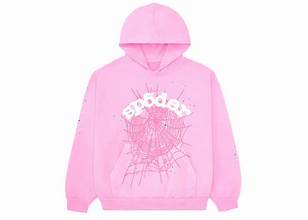Introduction: Redefining Fashion from the Ground Up
In the realm of contemporary fashion, few figures have reshaped its identity and meaning as profoundly as Rei Kawakubo. As the enigmatic founder and https://commedesgarconscom.us/
creative force behind Comme des Garçons, Kawakubo has never aimed to simply create clothing. Instead, she has continually deconstructed and reimagined what clothing is, what it should do, and how it communicates. Her approach, rooted in anti-fashion and radical abstraction, challenges traditional ideas of beauty, wearability, and identity. Rei Kawakubo’s world is not merely unconventional—it is an alternate universe where disruption is the rule, not the exception.
The Birth of a Visionary: Origins of a Revolutionary Mind
Rei Kawakubo did not come from a traditional fashion background. Born in Tokyo in 1942, she studied fine arts and literature at Keio University before moving into the advertising and textile industries. It wasn’t until the late 1960s that she began designing clothes under the label Comme des Garçons. The name, which translates to “like the boys,” signaled from the outset her inclination toward challenging gender norms and societal expectations. In 1973, she officially established the brand, and by 1981, she presented her first Paris collection, a seismic moment that shocked the fashion establishment.
Deconstruction as Creation: The Language of Comme des Garçons
Rei Kawakubo’s signature style is often described using terms like “deconstruction,” “anti-fashion,” and “avant-garde.” But these labels only partially capture the depth of her work. From asymmetrical silhouettes and raw hems to intentionally “unfinished” garments, her collections have repeatedly deconstructed both form and meaning. She doesn’t just break fashion’s rules—she dissolves them, creating entirely new paradigms in their place.
Her work often removes any hint of the commercial polish typically associated with haute couture. Pieces might appear tattered, oversized, or genderless. Yet each garment tells a story, one that urges the viewer to question their preconceived notions of beauty, gender, identity, and even humanity.
Challenging the Body: The Shape of Identity
One of the most notable aspects of Kawakubo’s designs is her approach to the human body. Traditional fashion seeks to accentuate or flatter the figure, but Kawakubo frequently rejects this idea. Instead, she uses clothing to obscure, distort, or abstract the body entirely. Her 1997 collection, famously dubbed “Lumps and Bumps,” featured padded outgrowths on dresses, forming alien-like silhouettes that defied any established idea of proportion.
For Kawakubo, the body is a canvas, not a constraint. Her clothing doesn’t just sit on the body—it dialogues with it, sometimes resisting it altogether. In doing so, she offers a bold commentary on the pressures placed on individuals to conform to specific beauty standards. She reclaims the body as a site of artistic and philosophical inquiry.
Gender, Androgyny, and Freedom in Dress
Kawakubo’s fashion has always existed outside binary frameworks. From the beginning, Comme des Garçons challenged the rigid divisions between men’s and women’s clothing. Her collections often feature gender-neutral or androgynous silhouettes, rejecting the traditional roles assigned to garments.
This emphasis on androgyny is not just aesthetic but political. By blurring the lines between masculine and feminine, she opens up a space where clothing becomes an expression of personal freedom rather than societal expectation. This radical approach has influenced generations of designers who continue to explore gender fluidity in fashion.
Fashion as Art: The Museum Collaborations and Exhibitions
Rei Kawakubo’s work has frequently transcended the boundaries of fashion and entered the domain of contemporary art. Her groundbreaking 2017 exhibition CDG Long Sleeve at the Metropolitan Museum of Art in New York, “Rei Kawakubo/Comme des Garçons: Art of the In-Between,” was only the second solo show the Met dedicated to a living designer—the first being Yves Saint Laurent.
The exhibition presented her creations as sculptural art forms, arranged thematically to reflect dualities like “Absence/Presence” and “Design/Not Design.” It confirmed what many in the fashion world already believed: that Kawakubo is not merely a designer but a conceptual artist. Her work doesn’t just adorn the body—it interrogates the very structure of fashion and identity.
Silence, Mystery, and the Power of Non-Conformity
One of the most compelling aspects of Rei Kawakubo’s persona is her refusal to explain her work. She rarely gives interviews, avoids public appearances, and allows her creations to speak for themselves. This silence, far from being a marketing strategy, reinforces the depth and complexity of her vision.
In a world that often demands clarity and accessibility, Kawakubo remains elusive. Her opacity invites deeper engagement, forcing critics, fans, and scholars to think more deeply about her work. This mystery becomes part of the brand’s identity—an ongoing dialogue with the unknown.
Impact and Influence: A Quiet Revolution
The influence of Rei Kawakubo is difficult to quantify but impossible to ignore. Designers such as Martin Margiela, Yohji Yamamoto, Junya Watanabe, and even Alexander McQueen have all been shaped by her radical vision. Her protégés, like Watanabe and Kei Ninomiya, continue to push the boundaries of design under the Comme des Garçons umbrella.
Beyond individual designers, Kawakubo’s legacy lies in her dismantling of the conventional rules of the fashion system itself. She has shown that fashion can be intellectual, emotional, confrontational, and profoundly artistic—all without compromising creative integrity.
Commerce Meets Concept: The Business of Innovation
Despite her avant-garde aesthetic, Kawakubo is also a shrewd businesswoman. Comme des Garçons operates a successful network of retail stores worldwide and includes numerous diffusion lines such as PLAY, Homme Plus, and collaborations with brands like Nike and Converse. Her Dover Street Market concept stores, located in fashion capitals like London, Tokyo, and New York, further reflect her curatorial approach to retail.
These ventures demonstrate that avant-garde design and commercial success are not mutually exclusive. Rei Kawakubo has managed to maintain creative freedom while building a global brand rooted in experimentation and risk-taking.
Conclusion: Rei Kawakubo’s Enduring Legacy
Rei Kawakubo’s world is one where fashion is not bound by convention, commerce, or clarity. It is a world of contradiction, complexity, and radical creativity. Through Comme des Garçons, she has built more than a fashion house—she has created a philosophy, a movement, and a challenge to the industry itself.
Her impact continues to resonate across the fashion landscape, not only through her own collections but in the work of designers, artists, and thinkers who see clothing as more than surface decoration. Rei Kawakubo has proven that true innovation comes not from following trends but from questioning the foundation upon which they stand.
In exploring her world, we encounter a vision that invites us to embrace uncertainty, celebrate imperfection, and wear our complexities boldly


